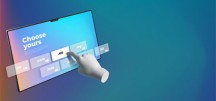
In the rapidly evolving landscape of healthcare, Remote Patient Monitoring (RPM) has emerged as a groundbreaking innovation, transforming how patient care is delivered and managed. This advanced technology is not just a trend but a fundamental shift in the healthcare paradigm, offering unprecedented opportunities for enhancing patient outcomes, reducing costs, and improving overall healthcare efficiency. As we move further into the digital age, the integration of RPM into everyday healthcare practices is set to redefine the future of patient care.
Understanding Remote Patient Monitoring
Remote Patient Monitoring refers to the use of digital technologies to monitor and collect medical and health-related data from patients outside of traditional healthcare settings, such as hospitals and clinics. This data is then transmitted electronically to healthcare providers, who can assess the patient's condition and make informed decisions about their care. RPM encompasses a wide range of devices and applications, from wearable health monitors and smartphone apps to more sophisticated home-based systems.
The primary goal of RPM is to extend the reach of healthcare beyond the walls of medical facilities, enabling continuous and proactive care. It allows healthcare providers to monitor chronic conditions, manage acute illnesses, and even provide preventive care by identifying potential health issues before they become critical. For patients, RPM offers the convenience of receiving high-quality care without the need for frequent in-person visits, making it especially valuable for those with mobility challenges or living in remote areas.
The Benefits of Remote Patient Monitoring
Remote Patient Monitoring offers a multitude of benefits that collectively contribute to a more effective and patient-centered healthcare system. These benefits include:
Continuous Monitoring and Early Detection:
One of the most significant advantages of RPM is the ability to continuously monitor a patient's health in real-time. Traditional healthcare models often rely on periodic check-ups, where health issues may not be detected until they have progressed significantly. In contrast, RPM enables continuous monitoring, allowing for the early detection of potential problems. For instance, a sudden increase in blood pressure or irregular heart rhythms can be detected immediately, prompting timely intervention and preventing more serious complications.
Improved Chronic Disease Management:
Chronic diseases such as diabetes, hypertension, and heart disease require ongoing management and regular monitoring. RPM provides patients with the tools to manage their conditions more effectively, offering real-time feedback and data that can be used to adjust treatment plans. For example, patients with diabetes can use RPM devices to monitor their blood glucose levels continuously, allowing for better control of their condition and reducing the risk of complications.
Enhanced Patient Engagement and Adherence:
RPM encourages greater patient engagement by empowering individuals to take an active role in their health management. Patients who are regularly involved in monitoring their health are more likely to adhere to treatment plans and make necessary lifestyle changes. This increased engagement can lead to better health outcomes, as patients are more informed about their conditions and the impact of their behaviors on their health.
Conclusion
Remote Patient Monitoring is revolutionizing healthcare by extending the reach of care beyond traditional settings and empowering patients to take control of their health. With the benefits of continuous monitoring, early detection, and personalized care, RPM is set to become a cornerstone of modern healthcare. Vitasigns is leading the way in this transformation, offering innovative RPM solutions that are changing the way patients and providers approach health management. As we embrace the future of healthcare, Remote Patient Monitoring will undoubtedly play a pivotal role in improving patient outcomes and enhancing the overall quality of care.





